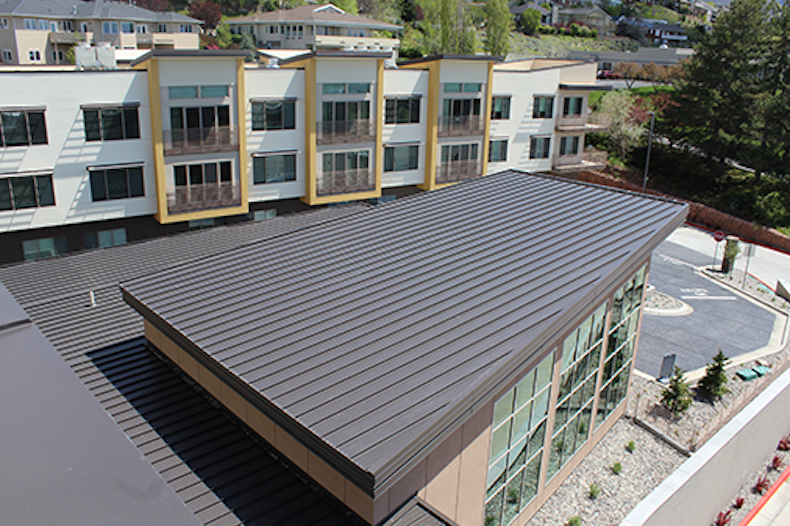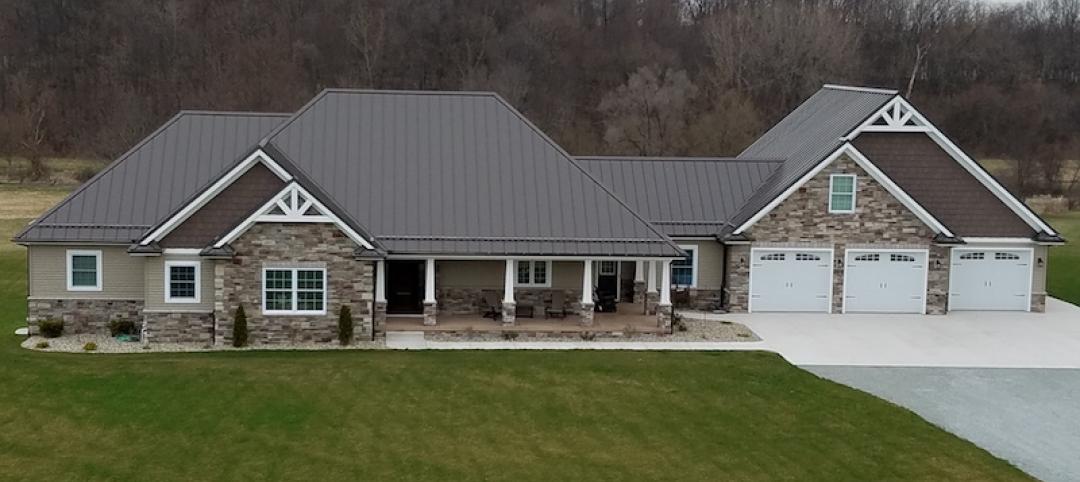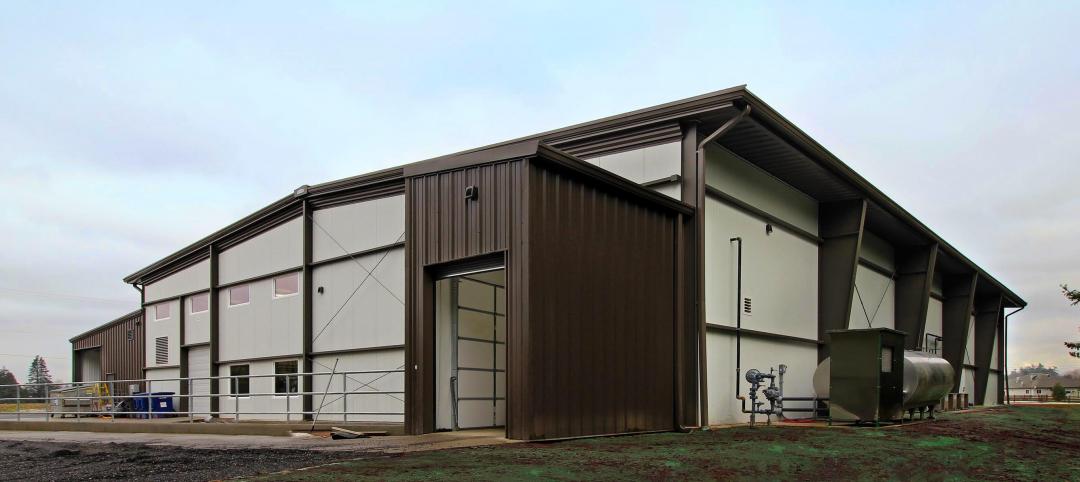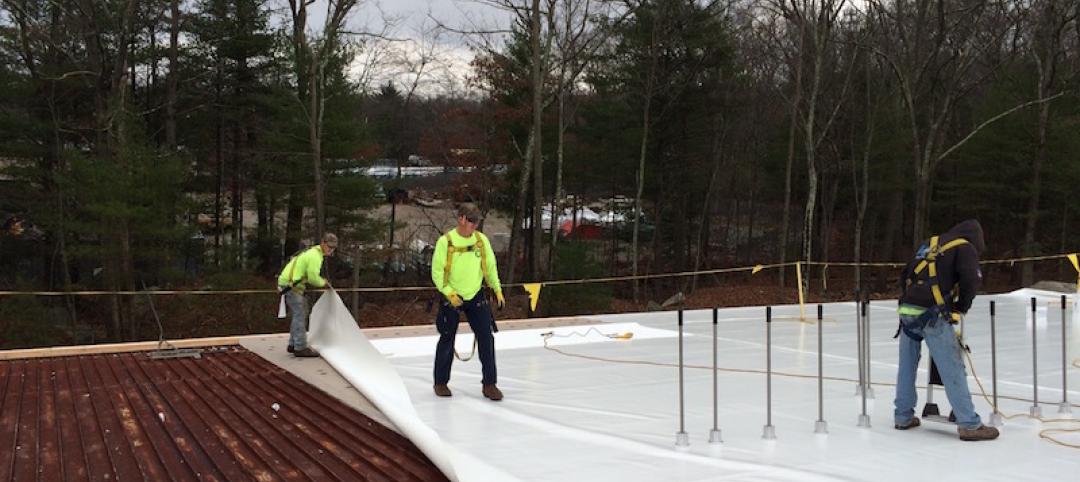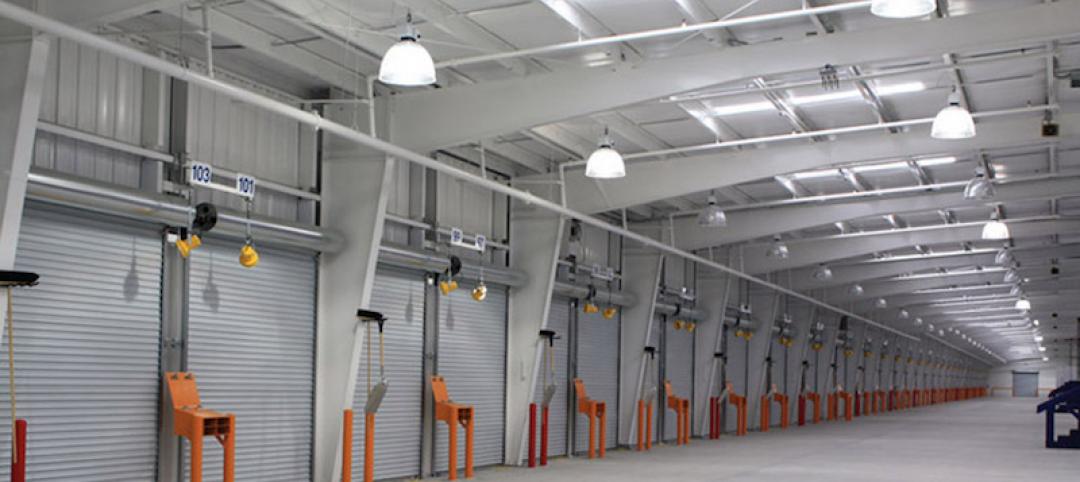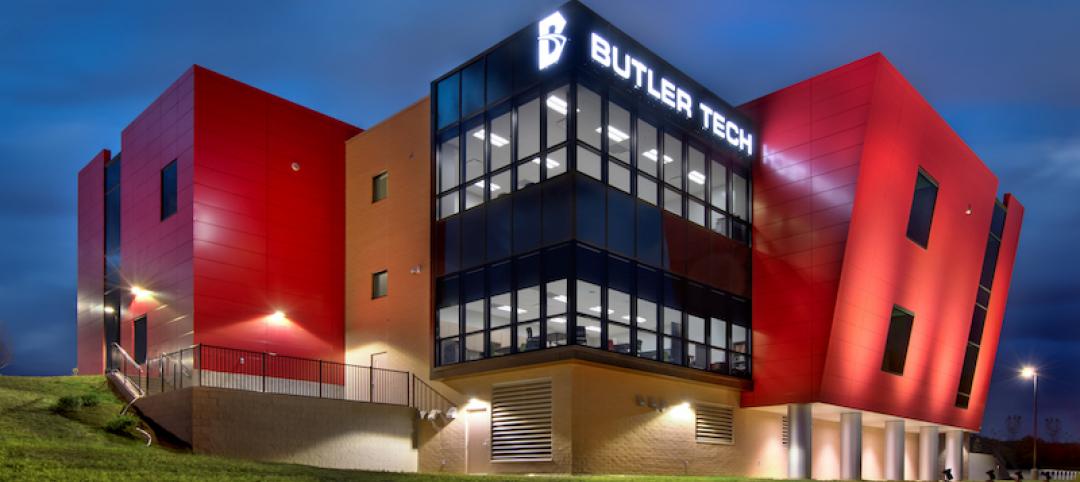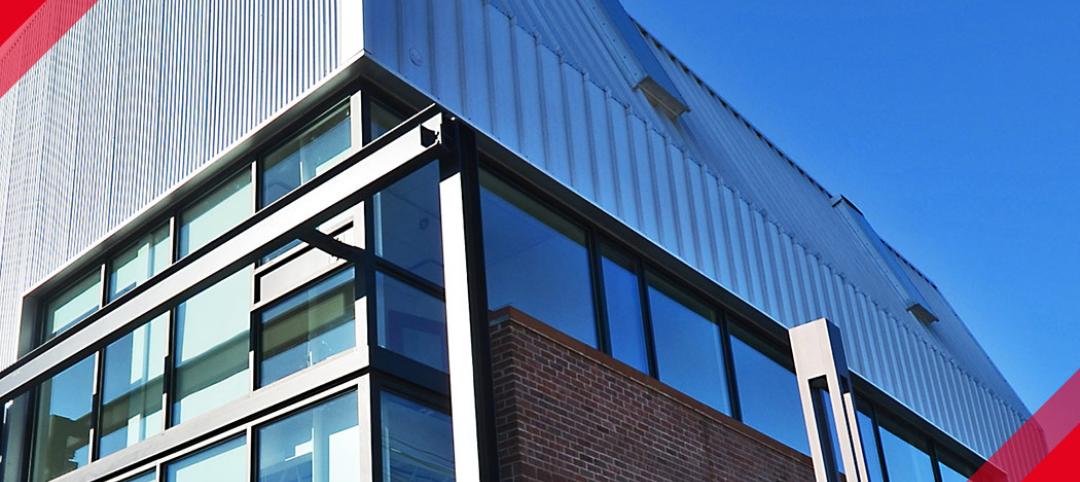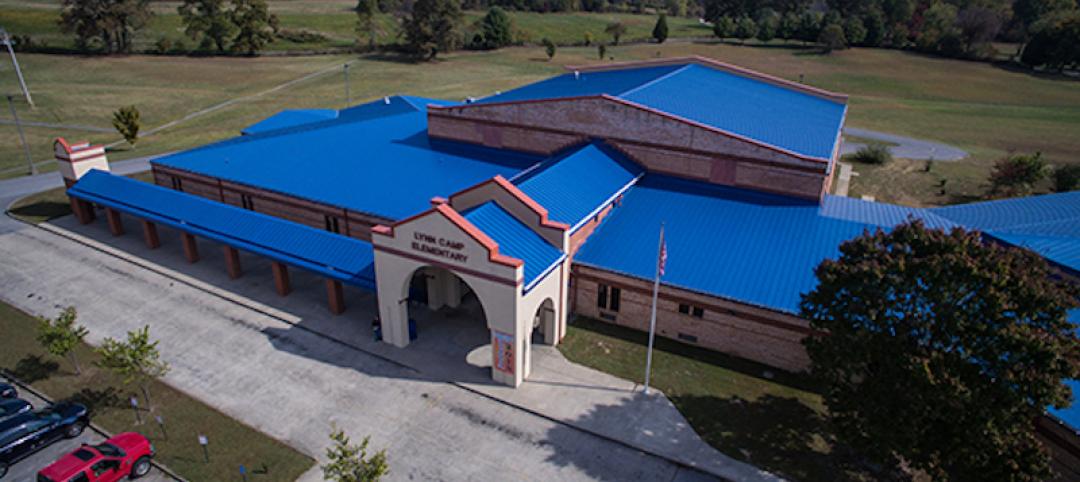Many large, commercial, low-rise buildings such as warehouses, big box retail stores, agriculture structures, aviation facilities, etc. often don’t benefit from steeply-sloped roofs the way residences and small commercial buildings might. This is because a steep roof slope would add unwanted height and uneccesary construction cost.
Instead, these buildings are more appropriately built with so-called “flat roofs.” This is actually is a misnomer since the roofs are, in fact, “low-slope roofs” which the the National Roofing Contractors Association (NRCA) defines as any roof with “a slope at or less than 3:12.” Anything steeper is considered a “high-slope roof.” With this in mind, let’s look at some key points to consider when designing and constructing a low-slope roof.
Low-Slope Roofing Materials
When it comes to selecting low-slope roofing products, there are generally three fundamental choices:
- Asphalt/ Bituminuous Products: The traditional commercial roofing norm for many years, the use of asphalt/bituminous products has dwindled as newer, more appealing options have emerged.
- Flexible Membrane Roofing: This roofing material can be made from a variety of types of plastic/polymer based materials (commonly known as EPDM, TPO, PVC, or others). Rolls of the selected membrane are laid out on the roof structure and secured in place either with properly spaced mechanical fasteners (screws with large washers) or with a continuous layer of adhesive.
- Metal Roofing: Sometimes overlooked, metal roofing is suitable for different roof slopes. Many metal roofs that use a standing-seam system are rated for use on roofs with a pitch as low as ½:12.
When considering which type of roofing material to use for a building project, there are a number of significant differences that illustrate why metal roofing is often preferred.
Engineered For Superior Performance
Standing-seam metal roofing is designed and engineered specifically for use on low-slope roofs as it meets a number of performance requirements:
- Water resistance: Water and other forms of precipitation don’t penetrate through metal and or through properly formed standing seams where the metal panels are joined. That is the reason they can tolerate such low slopes, allowing the water to drain away slowly and predictably without leakage.
- Rigidity: The rigid nature of metal means that the opportunity for ponding (i.e. standing water on a roof) is eliminated. This is not always the case with asphalt/bituminous or membrane roofing systems.
- Drainage: Water on a metal roof typically flows to the roof’s edge where it meets with gutters and downspouts that carry the water away from the building. Other roofing systems rely on interior drainage piped inside the building. This takes up space and has the potential to leak water inside the building and cause damage.
- Wind Resistance: Standardized uplift testing of metal roofing shows that it can perform as well or even better than membrane systems that are either mechanically-fastened or fully-adhered.
- Durability: Because of it’s engineered design and use of high quality coatings, the most cited advantage of metal roofing is its long-term strength and durability. That translates to a longer roofing life—50 years or more compared to the other two roofing types that are only rated for 20 or 30 years.
- Puncture Resistance: Low-slope roofing tends to get walked on and may also take direct abuse from hail and other hazards. Metal roofing is more resistant to punctures than asphalt/bituminous or membrane roofing and better able to tolerate foot traffic and hail without getting punctured.
- Construction/ Installation Ease: Metal roofing panels are sized and pre-fabricated to match the building where they are being installed. That typically means it takes less time in the field to place and install metal roofing compared to other types of roofing. Further, installation of metal panels is not restricted by temperature or other weather conditions since they can easily tolerate a wide range of either and still perform as intended. On low-slope roofs, their surface is also easy to walk on without risking falls or other safety hazards.
Cost-Effectiveness
Using metal roofing on low-slope roof systems has been shown to be quite cost effective in a number of ways:
- Fewer labor hours as a result of the ease of installation saves money during construction.
- Competitive material costs, particularly if the metal roofing is part of a total metal building package from a single manufacturer.
- Minimal maintenance requirements and aversion to rusting, mold growth and decay that save the building owner money over time.
This all adds up to a very favorable life-cycle cost.
Considering the performance, cost and life-cycle benefits of metal roofing panels, this material should always be considered as a viable option for low-slope roofing systems. Metal roofing manufacturers like MBCI can not only help you select the right metal roofing products, but can also provide the information and resources needed to ensure they’re installed properly.
View examples of low-slope metal roofing projects and contact your local MBCI representative to start your project today.
Related Stories
Sponsored | Roofing | Jun 29, 2017
Metal roofs are soaring in popularity in the residential market
The Metal Roofing Alliance estimates that 750,000 metal roofs were installed on U.S. homes in 2015.
Sponsored | Metals | Jun 15, 2017
Inside-out cheese-making: 12,000-sf metal building features an unusual exoskeleton design
In order to maintain hygienic cleanliness inside the facility, smooth, continuous wall surfaces with a minimum number of joints, indents or protrusions is desirable.
| Jun 13, 2017
Accelerate Live! talk: Driving value through process innovation, Jonathan O'Leary, NCI Building Systems (sponsored)
NCI Building Systems’ Jonathan O'Leary discusses why AEC firms must rely on their partners to simplify the business process and minimize risk.
Sponsored | Roofing | May 24, 2017
Duro-Last Duro-Bond Roofing System installed on New England warehouse
Breault Roofing created a way to make the installation process more efficient by requesting mostly tabless sheets and fastening the membrane with induction welding to the purlins instead of a regular mechanically fastened system onto the pan.
Sponsored | Metals | May 22, 2017
Tapered columns can slim down costs
In many metal building applications, straight columns may have more steel than they need.
Sponsored | Coatings | May 5, 2017
Butler Tech Bioscience Center features hands-on learning in bold new building
Butler Tech students can now study and work in neighboring buildings that feature ALPOLIC metal panels coated in Valspar’s Valflon®.
Sponsored | Metals | May 3, 2017
Steel protection methods
There are robust, well-proven ways to protect steel so it can perform up to its potential virtually indefinitely.
Sponsored | Metals | Apr 28, 2017
Colorful corrugated wall panels provide bright new look for community library
Approximately 2,600 sq. ft. of PAC-CLAD 7/8” Corrugated Panels in five different colors was just what the design team was looking for.
Sponsored | Coatings | Apr 27, 2017
Community center makes a statement in West Sacramento
It takes a team to find the perfect color combination, and this time we accomplished it with the help of CENTRIA.
Sponsored | Roofing | Mar 21, 2017
Duro-Last provides solution for Kentucky elementary school's leaky roof
The assembly used for this project was Duro-Guard EPS Flute Fill Combo as the base, and then Duro-Guard ISO HD and DensDeck® cover boards.


